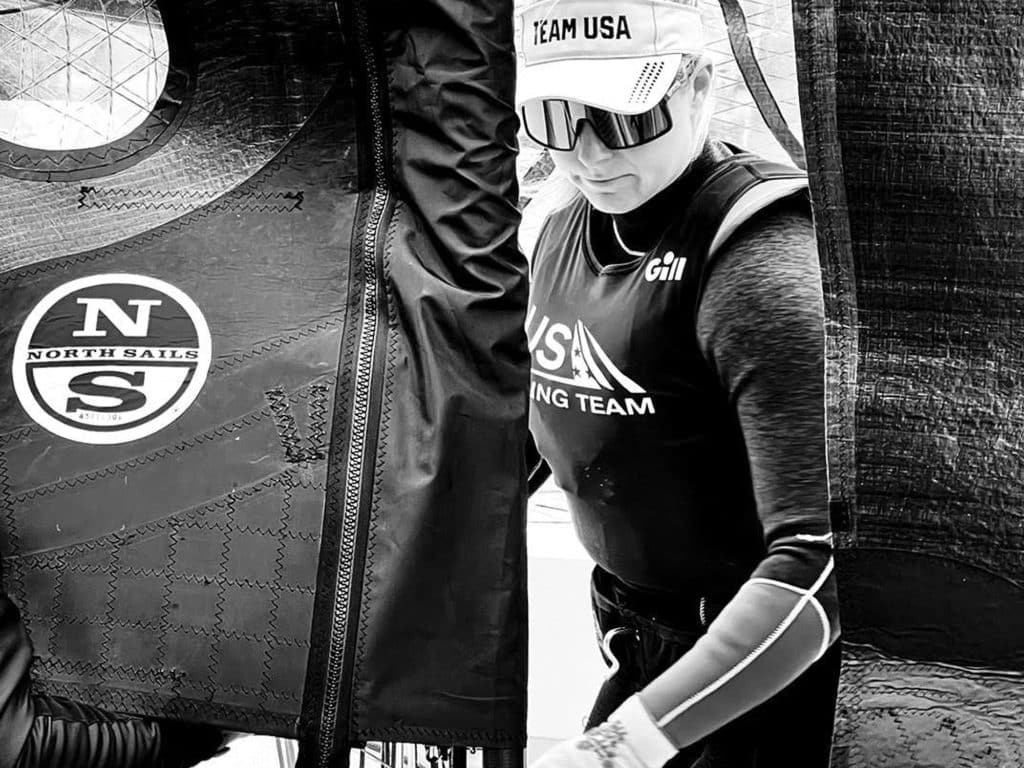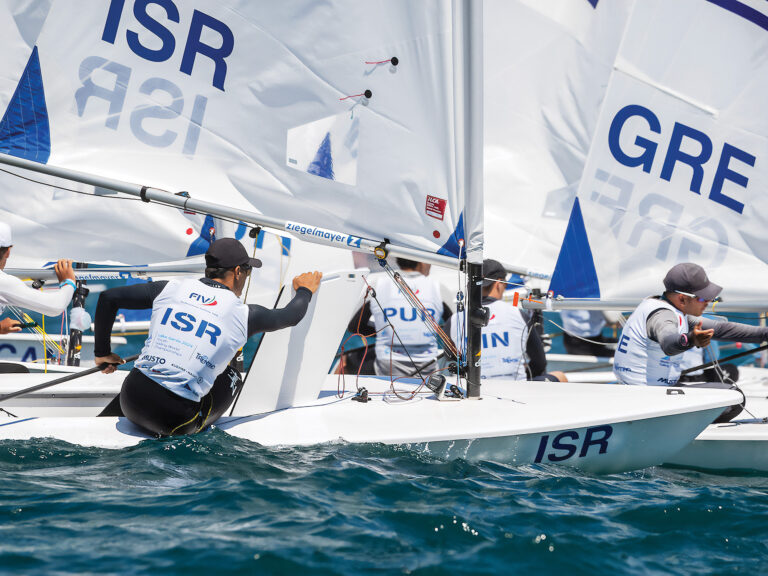
It’s July 23, 2022, and I am in Marseille, France, at the Olympic sailing venue for Paris 2024. My crew, Maggie Shea, and I are getting ready for a day of training in our baptism in the Mistral conditions. Only one year ago, we were wide-eyed at the opening ceremony for the Tokyo Games, preparing our minds, bodies and equipment to deliver our best performance on the water. It’s crazy to think how fast time has passed, but it’s exciting to realize all the improvements we can make between now and this time in two years. We have two goals for Marseille: Learn the venue on and off the water, and get ready for the 49erFX World Championship in September.
The US Sailing Team has a base at Yachting Club Point Rouge, which allows us to set up camp with the two containers we had in Tokyo (donated by Jim Cunningham and the US Etchells class). These containers provide a workshop, debrief room, locker and storage space, refrigerators and, most importantly, shade and air conditioning.
As expected of a Mediterranean summer, air temperatures hover in the 90s and the water is a toasty 80 degrees. We’ve had great breeze every day, mainly from the west, which means big-time chop and waves. The Mistral kicks in when a low-pressure system passes east and is followed by a high-pressure system to the northwest.
When we head out for training, it’s blowing 15 to 20 out of the northwest with a 6-foot swell and steep chop. The team’s meteorologist, Chelsea Carlson, of SeaTactics, is on-site and joins us for the day’s training. It’s important that we all talk about and log the weather and wind patterns while we are here.
We set out for a three-hour training session, with the first half focused on tuning and technique in the waves. One unique element of the 49erFX is that the crew has the mainsheet, so communication and coordination with the driving and trimming are critical. Today, we work on keeping a higher average speed in the waves and minimizing the extremes with our modes. I have to focus on more-precise driving over the waves and dial more into Maggie’s comms. She is talking to me about mainsheet range and the speed of the boat.
The range is my guide for any puff or lull; how much room she has to depower or power up the boat. With no instruments allowed in racing, speed is based on feel, which is a specific sensation in the 49erFX. When we have speed, we know we can take a little bit of height at the right moment. And with each puff, lull and wave sequence, these comms continue.
Soon it’s time to set the kite to rip downwind in these beautiful conditions. I love it when we are in full-send mode, with both of us in the foot straps hiking as hard and aft as we can to keep the bow tracking over the wave tops. Our plan is to do several jibes on this long run to work on quickly finding the right spot. Sometimes it’s tempting to wait for the perfect spot to go in these conditions, but we risk overspending the layline and getting slow. So, if we can be confident in our boathandling to jibe when the coach blows the whistle, or just shortly after, we can make huge gains in racing.
Next, we get into short-course racing with a few other teams and focus on executing starts (specifically, the go-time for these conditions), locking into speed off the line using what we’ve just learned in the tuning portion and boathandling now that other boats are in the picture. We acknowledge that small shifts are happening with this breeze direction, but given the large waves and chop, a wide lane is the key to speed off the starting line.
After three hours of a productive and fun session, ticking off a few goals we had set for the day, we return to the base. This is a fun part of the day because we have a few different classes and coaches around. While hosing off our boat or eating a post-sailing snack, we can share nuggets of knowledge with teammates, share stories of a good race, or laugh at our wipeouts. We complete our equipment checks, debrief in the cool air of the container, and slide the cover over the boat. We are tired but happy knowing that another day of Mission Marseille has been checked. One down. A lot more to go.









